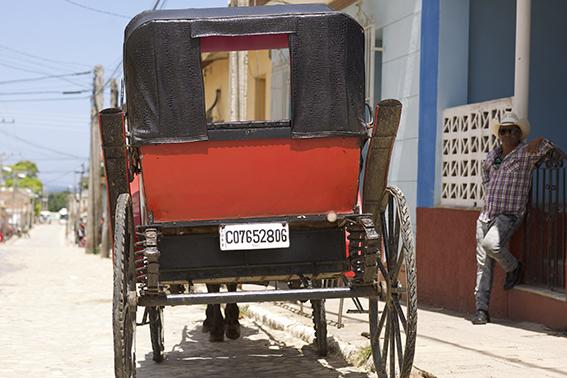
Maïté Mazel
Our mobility in Cuba based on mobility and experimentation/learning was made of several steps.
Thanks to the collaboration of the Faculty of Communication of Havana, we have developed a cartography representing the territories, the places and the public that we wanted to discover, meet and whom we wanted to exchange with. We started, first of all, a field survey following a classic approach, by collecting information, visiting places, interviewing... Then, by developing our field survey, fed by exchanges with the Cubans, they showed us the limit of our methodology. They explained to us how to approach Cuba culturally in the socio-politico cultural context; the questions were far too "European" in their opinion, and then we were far from being able to observe and embrace the question of mobility, public space and doing together. This has naturally led us to question ourselves, to refocus the research on ourselves first, with the others afterwards, to leave more room for the body and the sensitive, to give them the place they deserve in the intellectual process. We accepted the binding conditions (compared to our comfort standards) that offered the daily life, in total immersion in the spirit of living the experience through traveling, language, cooking... a daily life sometimes complicated but essential to get closer to the sensitive and Cuban living. At the same time, we decided to develop an experimentation through the practice of rumba. Born in sugar plantations and slaves’ cabins, the Cuban rumba is celebrated every year by the inhabitants as a foundation of their identity and a claim of their African roots. At this stage, we were completely stripped of our culture, so we had everything to learn gesture, meaning, aesthetics... This practice enriched with a questionnaire, completed our analysis after each rumba class. In addition, a video on daily life and each dance class was made by Sydney Mazel (photographer) throughout our mobility as part of our methodology ; the subsequent viewing with our Cuban teachers and friends was also a way of analysis and understanding of their view of our transformation and at the same time theirs! The rumba was therefore our cultural tool for experiencing emotions, a vector of knowledge of Cuban culture. It created the necessary gap to capture Cuban life in a way closer to reality, our interlocutors discovered us also through this breach. It allowed to exchange and to share positively, the way others look at us to change, their behaviors, their words... The experience thus came to feed the data collected at the very beginning of our research and to give meaning to our first month of mobility in Cuba. Gradually, our methodological approach took shape. What emerges for a first draft of methodology:
- First of all, try to leave a side your own culture,
- Then impose yourself to live as and with the people of the place,
- And finally to practice an art strongly related to the culture of the country.
Instantly, this generated a natural reaction of our interlocutors: the willingness to share mutual knowledge, a thirst for learning and understanding in terms of emotions, feelings, fulfillment and complementarity.
Many commons have been observed and we started to imagine that if the commons are perceived and accepted, it may become a transcultural force. It would be interesting to understand already if it is possible to create an experimental collective to deepen our research in several territories and cultures and to develop a working methodology based on "doing together".
